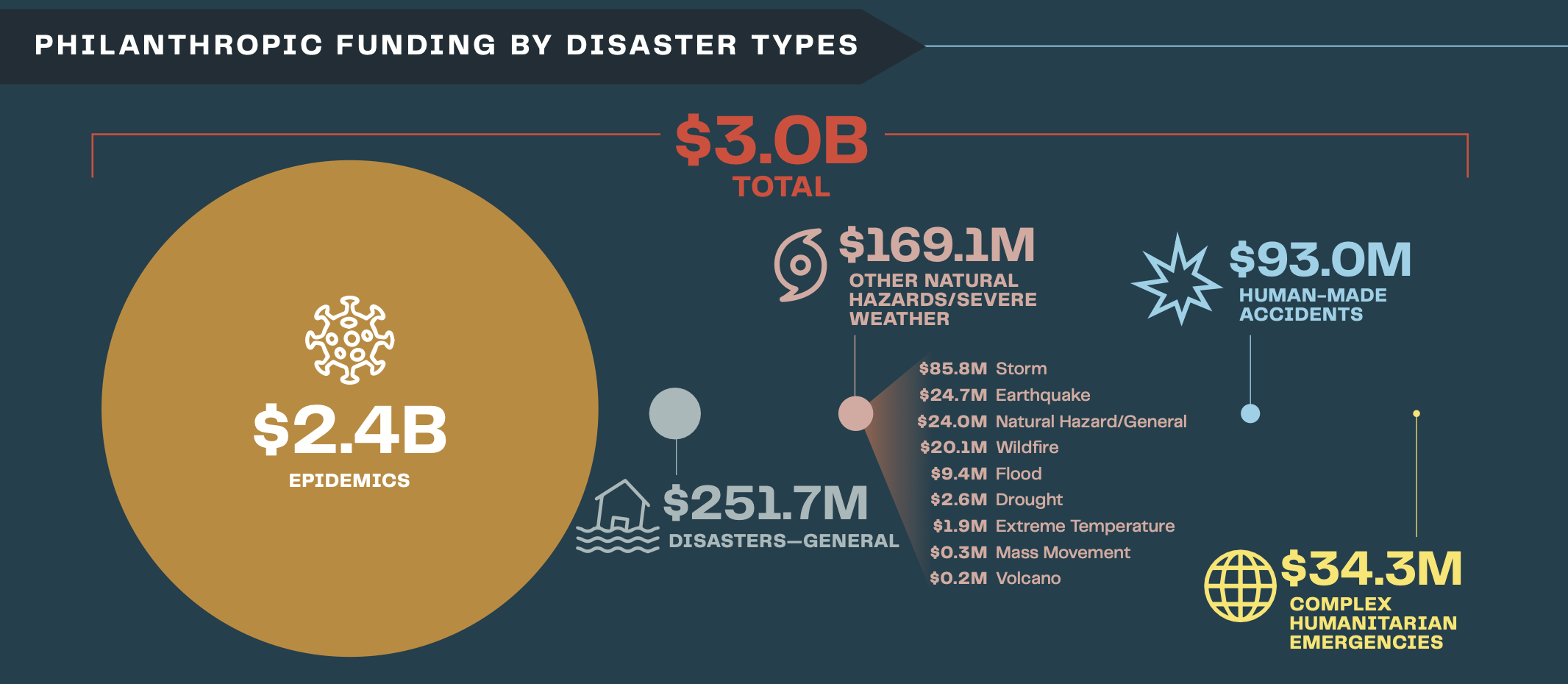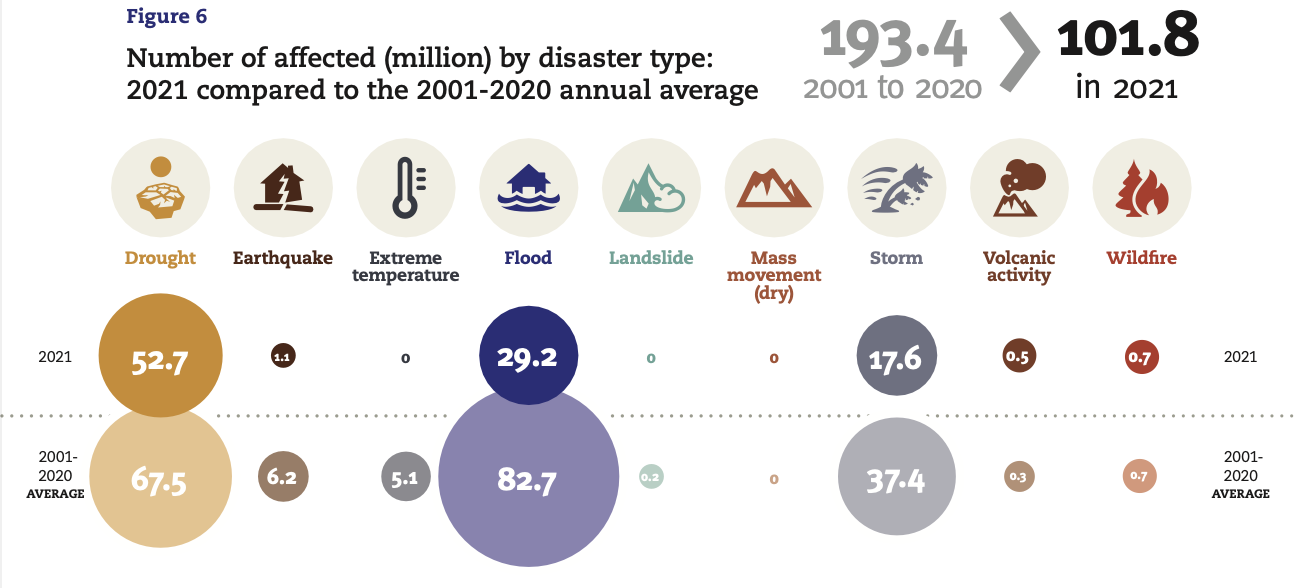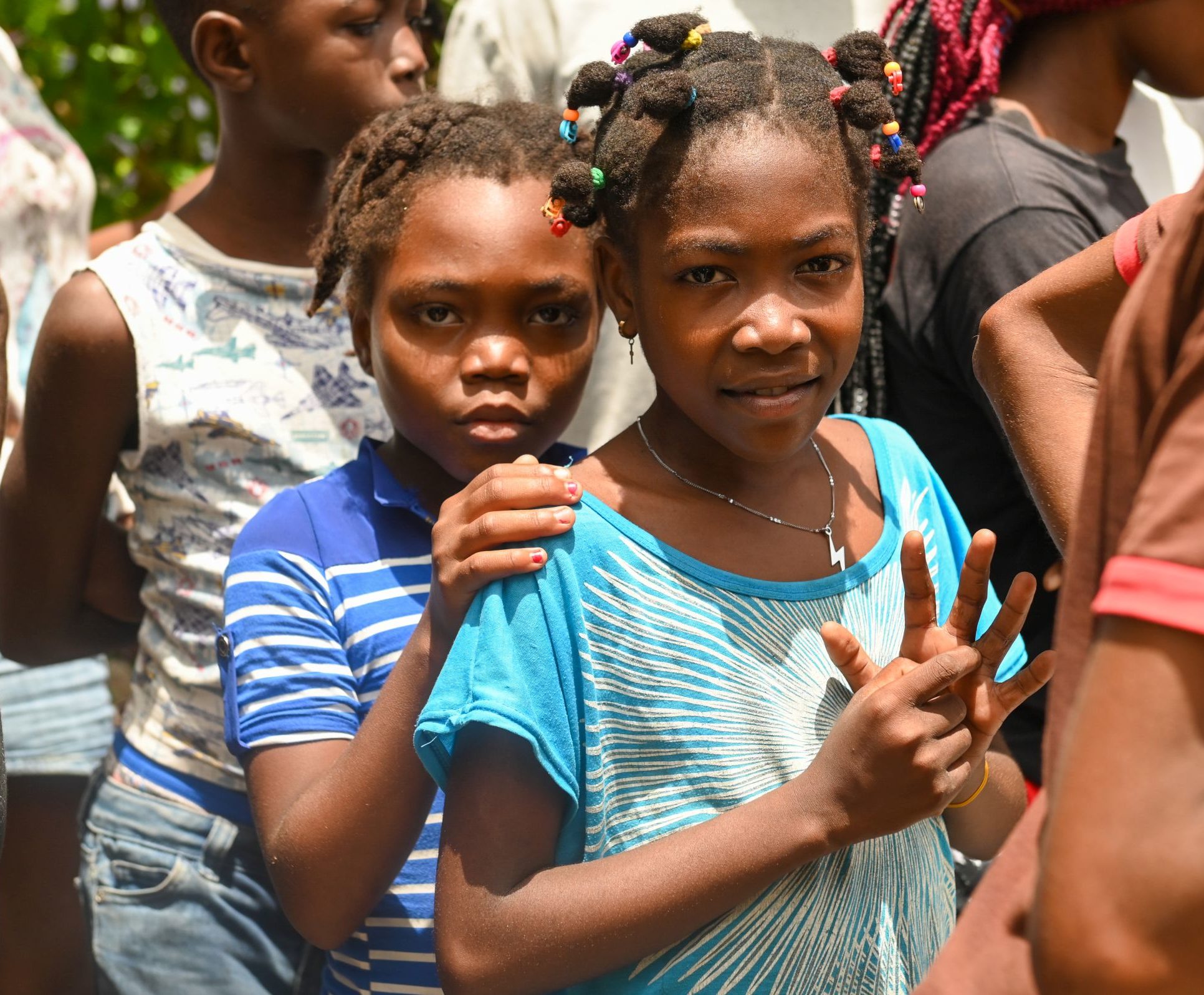Understanding philanthropy’s support for flood and drought

Floods and drought are the two natural hazards that affect the most people globally. When I write the weekly What We’re Watching blog post, which includes a summary of new and ongoing disasters globally, I regularly write about floods due to their frequency. I also often use the post to highlight the significant impacts of drought. Unfortunately, despite their frequency and devastating effects, philanthropy’s support for flood and drought is minimal.
In December, we released the 10th annual Measuring the State of Disaster Philanthropy (SODP) report, and we have been poring over the data since. When reading the report, which examined 2021 disasters, I was curious to see how philanthropic funding was distributed across the different disaster types – disasters-general, natural hazards and severe weather, human-made accidents, and complex humanitarian emergencies.
Looking more closely at the natural hazards category, I noticed something regarding funding for two of the natural hazards affecting the largest number of people globally: they once again received a small fraction of the funding.
Comparing data
Out of the $169.1 million designated for other natural hazards and severe weather in 2021, only $9.4 million (5.5%) went toward flood and $2.6 million (1.5%) to drought. Comparing these figures against storms – the natural hazard that received the most funding at $85.8 million (50.7%) – shows the minimal amount of funding that flood and drought received.

How does this compare with what we know about natural hazards and their effect on people around the world? Is there any difference in giving due to the scale of the disaster? The answer is no. In fact, according to the Centre for Research on the Epidemiology of Disasters’ (CRED) Emergency Events Database (EM-DAT), more people were affected by flood and drought in 2021 than all the other disaster types combined.

It is important to recognize that due to the criteria and design of each, SODP’s data and EM-DAT do not capture all philanthropic funding for disasters or every disaster occurrence, respectively. That said, when looking at the data, a picture emerges of the misalignment between the types of disasters philanthropy invests in and those with the broadest impact on individuals and communities.
Sudden-onset versus slow-onset disasters
We do not have enough conclusive evidence to answer why this misalignment exists. However, we at CDP have observed that sudden-onset disaster events, such as those associated with earthquakes, tend to elicit a greater response due to the prominent and dramatic images they provide us.
Meanwhile, disasters with a slow onset are often ignored. The United Nations Office for Disaster Risk Reduction demonstrated through a 2019 paper on overcoming barriers to proactive response that slow-onset disasters such as drought often fall outside the mandate of disaster management agencies. Additionally, the paper said the geographically dispersed impacts of these disasters reduce their perceived political importance, and the very concept of disaster is often only connected to sudden-onset disasters.
Flood and drought trends
Trends related to floods and droughts are alarming.
Water-related hazards are increasing in frequency. According to the World Meteorological Organization (WMO), “Since 2000, flood-related disasters have increased by 134%.” Extreme events, including catastrophic floods, are expected to increase in frequency and severity in the coming decades.
Droughts are also increasing. The United Nations Convention to Combat Desertification “Drought in Numbers 2022” report highlights that since 2000, the number and duration of droughts have risen by 29%.
Particularly concerning is who will be most impacted by such trends. For example, research has shown that where people live is the most important factor for overall flood risk. According to one study published in January 2022, “flood risk in the U.S. will increase by about 25% in the next three decades, and Black communities in the South will face disproportionate harm.”
In the Horn of Africa, five consecutive failed and below-average rainy seasons are expanding and deepening the humanitarian crisis in the region. Millions of people experience challenges accessing food and income due to the drought. Among the worst affected are people already enduring other weather extremes, conflict and economic shocks, meaning their ability to bounce back and recover on their own is diminished.
If these trends in frequency continue, the most marginalized communities will be particularly affected.
The opportunities for philanthropy
In a world of increasing frequency and intensity of disasters combined with the persistence of underlying vulnerabilities, strategically deploying philanthropic investments means, in part, identifying gaps and addressing them.
So, having discussed the gap between the amount of philanthropic funding for flood and drought and the widespread impact of these two natural hazards globally, what can we do?
- Learn more about floods and drought. Increasing our familiarity with certain natural hazards and understanding the underlying vulnerabilities that create the conditions for a disaster to occur is critical. This knowledge will ensure investments are strategic and address the right gaps with the right solutions. CDP’s Issue Insights on floods and drought are a great place to start.
- Shift focus from disaster events to year-round. A more holistic approach to our thinking about disaster is needed. One that is not solely focused on disaster seasons or responding to disasters that occur at a specific time. This shift would help us as funders better see the range of impacts communities face from natural hazards and know where to invest.
- Ensure funding addresses vulnerability. Hazards like floods and drought are natural, but disasters are not. Therefore, funders can invest in areas that will improve people’s lives and reduce their vulnerability to disaster. For example, investing in mitigation for people living in areas of high flood risk or increasing access to water for people experiencing drought will help prevent disasters from occurring in the first place.
For more disaster-giving insights, check out the full SODP 2023 infographic and read previous SODP reports here.
More like this

A decade of measuring the state of disaster philanthropy

